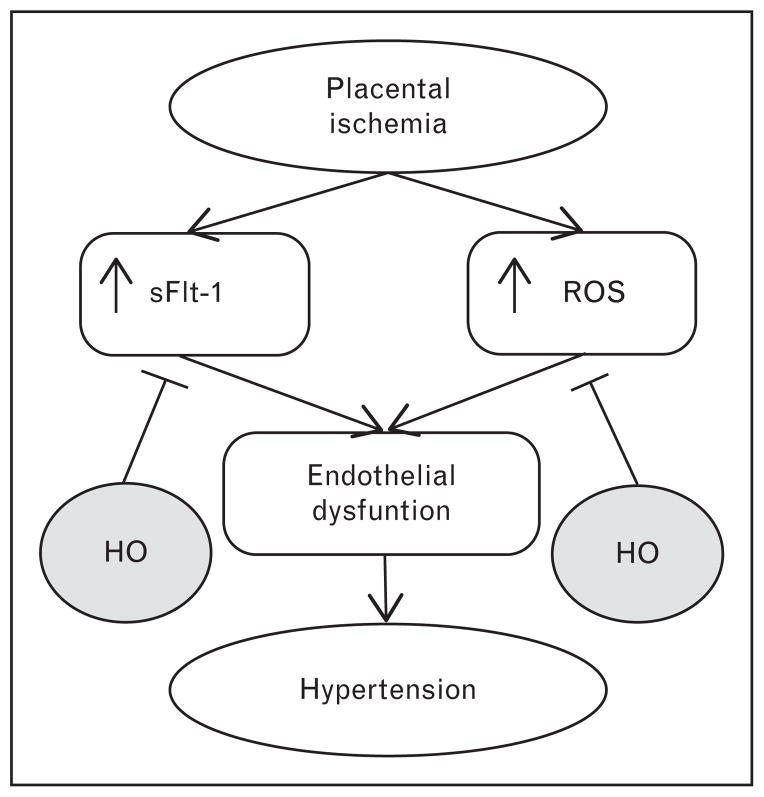FIGURE 2.
At the root of preeclampsia is placental insufficiency leading to placental hypoxia/ischemia. In response, the placenta releases factors leading to the maternal symptoms. Two important pathways activated in response to placental ischemia are the production of the vascular endothelial growth factor (VEGF) antagonist sFlt-1 and increased production of reactive oxygen species (ROS), both of which are important players in the development of maternal hypertension. Heme oxygenase (HO), through production of both carbon monoxide and bilirubin, has the ability to block both of these pathways and could be a novel therapeutic agent in the management of preeclampsia.

